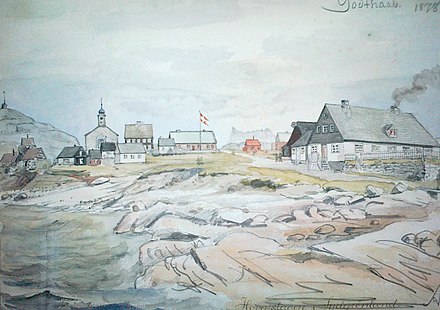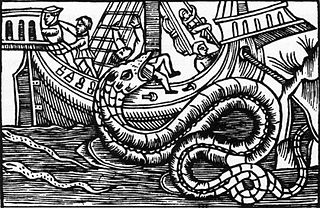
A sea serpent or sea dragon is a type of dragon described in various mythologies, most notably Greek, Mesopotamian (Tiamat), Hebrew (Leviathan), and Norse (Jörmungandr).

Nuuk is the capital and largest city of Greenland. It is the seat of government and the country's largest cultural and economic centre. The major cities closest to the capital are Iqaluit and St. John's in Canada and Reykjavík in Iceland. Nuuk contains almost a third of Greenland's population and its tallest building. Nuuk is also the seat of government for the Sermersooq municipality. In January 2020, it had a population of 18,326.

Hans Poulsen Egede was a Dano-Norwegian Lutheran missionary who launched mission efforts to Greenland, which led him to be styled the Apostle of Greenland. He established a successful mission among the Inuit and is credited with revitalizing Dano-Norwegian interest in the island after contact had been broken for hundreds of years. He founded Greenland's capital Godthåb, now known as Nuuk.

The Inatsisartut, also known as the Parliament of Greenland in English, is the unicameral parliament of Greenland, an autonomous territory in the Danish realm. Established in 1979, it meets in Inatsisartut, on the islet of Nuuk Center in central Nuuk.

Egede is the remains of a lunar impact crater that has been flooded by lava, leaving only the somewhat polygonal circumference of the rim protruding just above the mare. It was named after Dano-Norwegian natural historian Hans Egede. It is located on the southern edge of the Mare Frigoris, to the west of the crater Aristoteles. To the southwest is an arc of low mountains curving between the rims of Aristoteles and Eudoxus. The floor of Egede is flat and nearly featureless, except for a few tiny craterlets, including secondaries from Aristoteles. The surviving rim has a maximum altitude of 0.4 km above the surface.
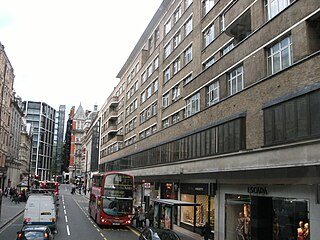
Sloane Street is a major London street in the Royal Borough of Kensington and Chelsea which runs north to south, from Knightsbridge to Sloane Square, crossing Pont Street about halfway along. Sloane Street takes its name from Sir Hans Sloane, who purchased the surrounding area in 1712. Many of the properties in the street still belong to his descendants the Earls Cadogan, via their company Cadogan Estates.

Paul or Poul Hansen Egede was a Dano-Norwegian theologian, missionary, and scholar, principally concerned with the Lutheran mission among the Kalaallit people of the Greenland established by his father Hans in 1721.

Chelsea Manor House was once the demesne of the main manor of the medieval parish now roughly commensurate with the district of Chelsea, London. It was a residence acquired by Henry VIII of England in 1536, and was the site of two subsequent houses. Today, the area is covered by residential streets.

Hvalsey is located near Qaqortoq, Greenland and is the site of Greenland's largest, best-preserved Norse ruins in the area known as the Eastern Settlement (Eystribyggð).
Ilmer Halt railway station was a former halt on the Great Western and Great Central Joint Railway serving the village of Ilmer in Buckinghamshire.
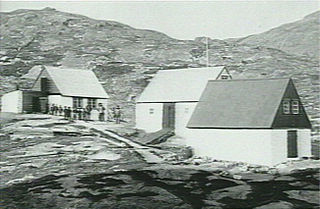
Kangeq or Kangek is a former settlement in the Sermersooq municipality in southwestern Greenland. It is located on the same island that formed the first Danish colony on Greenland between 1721 and 1728.
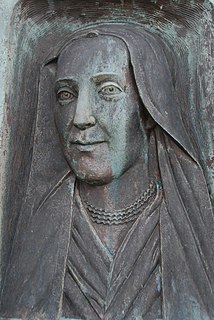
Gertrud Rask was the first wife of the Danish-Norwegian missionary to Greenland Hans Egede and was the mother of the missionary and translator Paul Egede.

Old Nuuk may refer to several neighborhoods of Nuuk, the capital of Greenland.

Hans Egede Church is an evangelical Lutheran church in Nuuk, Greenland, located in the district of Old Nuuk. The church was consecrated on the 250-year anniversary of the founding of Hans Egede's mission. It is a wooden structure, named after Danish-Norwegian missionary Hans Egede.

The Statue of Hans Egede is a prominent monument in Nuuk, Greenland. It commemorates the Dano-Norwegian Lutheran missionary Hans Egede who founded Nuuk in 1728. The statue lies on a hill near the shore above Nuuk Cathedral in the historical Old Nuuk area of the city. A duplicate statue by August Saabye stands outside Frederik's Church (Marmorkirken) in Copenhagen.

Jomfruens Egede is a manor house located three kilometres north-west of Faxe, a small town some 40 km south of Copenhagen, Denmark. It owes its current appearance to Sophie Amalie Moth who in the late 18th century altered it with the assistance of Caspar Frederik Harsdorff and Joseph Christian Lillie. The National Museum of Denmark has described it as possibly the finest example from the period.

The Moravian missions in Greenland were established by the Moravian Church or United Brethren and operated between 1733 and 1900. They were operated under the auspices of the Royal Danish College of Missions until its dissolution in 1859 and were finally surrendered to the Lutheran Church of Denmark in 1900. Missionaries were allocated to the region and sometimes even sent wives who had been chosen for them and approved by the drawing of lots, a form of Cleromancy.

Aqqusinersuaq is a major street in Nuuk, Greenland. The 1.8 kilometres (1.1 mi) runs through its City Centre with one lane in either direction. It begins at the Nuuk Port and Harbour heading south and turns north at Sipisaq Kujalleq and then northwest at 400-talik roundabout and ends when it meets HJ Rinksvej Aqqutaa.

The Ye Olde Mitre is a Grade II listed public house at 1 Ely Court, Ely Place, Holborn, London EC1N 6SJ.
Niels Rasch Egede was a Norwegian-born merchant and Lutheran missionary in Greenland.

